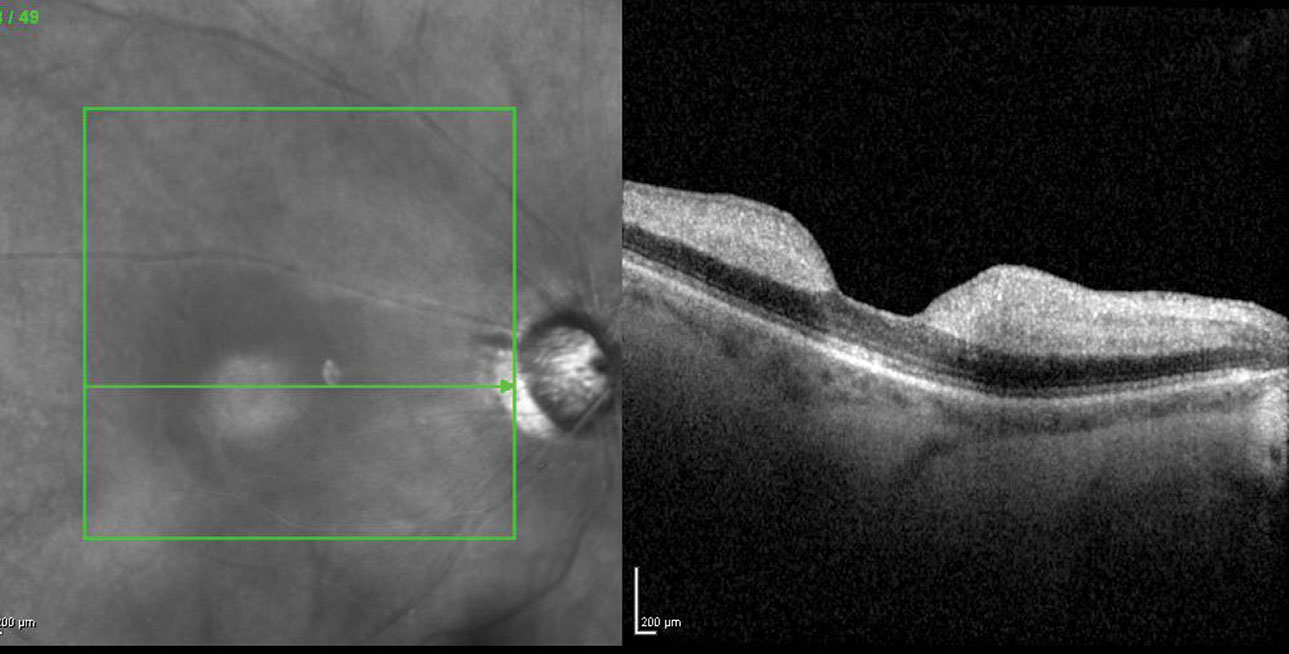 |
Hypertension and diabetes are common risk factors for RAO. Like prior reports on the RAO patient population, the present study found that more than 50% of patients had hypertension and about 25% had diabetes. Photo: Diana Shechtman, OD. Click image to enlarge. |
No proven therapy exists for vision loss following a retinal artery occlusion (RAO), but management involves reducing complications such as ischemia. Because of RAO’s association with stroke, eye care providers refer these patients immediately for cardiovascular workup to a stroke center or emergency department, per the American Academy of Ophthalmology’s Preferred Practice Pattern Guidelines. Experts say understanding secondary vascular events and identifying risk factors can help triage those at greatest risk as well as stratify management options. A study published recently in JAMA Ophthalmology added more risk data to the literature.
The researchers retrospectively identified 34,874 RAO patients’ medical records with at least one year of follow-up, and a sex-, age- and comorbidities-matched cataract control cohort. At the time of the RAO event, patients were on average 66 years old. The researchers reported significantly higher rates of death, stroke and myocardial infarction (MI) after RAO compared with controls. Their findings are summarized in the table below:
Retinal Artery Occlusion vs. Control Population
(%) | 2 weeks | 30 days | 1 year | 5 years | 10 years |
Rate of death | 0.14 vs. 0.06 | 0.29 vs. 0.14 | 3.51 vs. 1.99 | 22.74 vs. 17.82 | 57.86 vs. 55.38 |
Risk of stroke | 1.72 vs. 0.08 | 2.48 vs. 0.18 | 5.89 vs. 1.13 | 10.85 vs. 4.86 | 14.59 vs. 9.18 |
Risk of MI | 0.16 vs. 0.06 | 0.27 vs. 0.10 | 1.66 vs. 0.97 | 6.06 vs. 5 | 10.55 vs. 9.54 |
The researchers explained in their JAMA Ophthalmology paper that after an RAO, there’s an increased relative risk of vascular complications in the short term, compared with controls, though the absolute risk is relatively low. Long-term, the increased risk persists.
“We emphasize the potential need for multidisciplinary evaluation with long-term systemic follow-up of patients post-RAO,” the researchers concluded in their paper.
Wai KM, Knapp A, Ludwig CA, et al. Risk of stroke, myocardial infarction, and death after retinal artery occlusion. JAMA Ophthalmology 2023. [Epub October 26, 2023]. |

